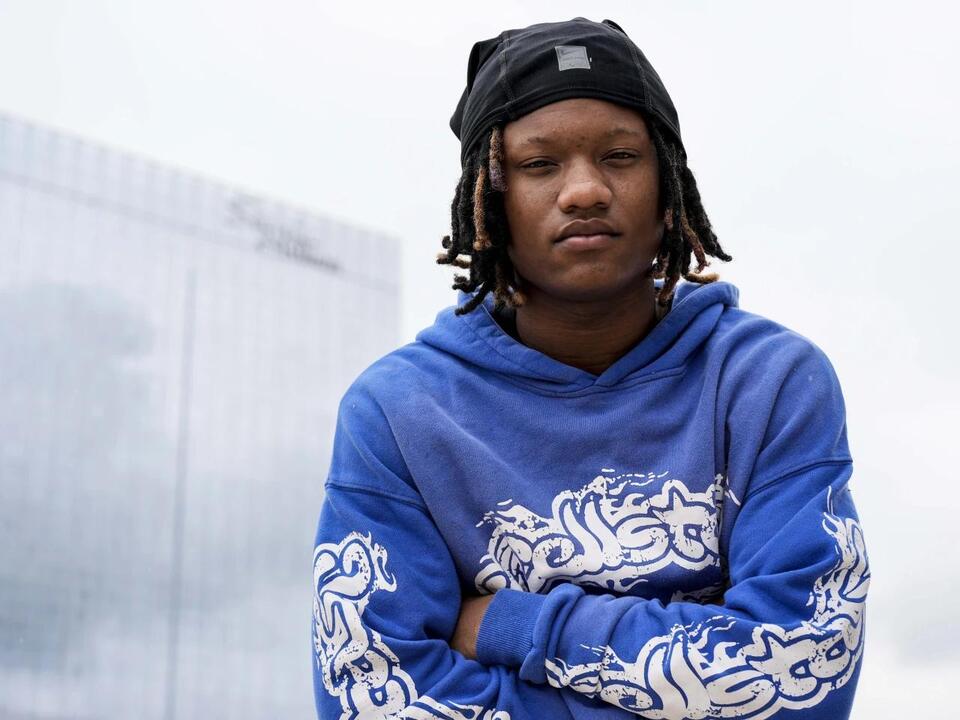Physical Address
304 North Cardinal St.
Dorchester Center, MA 02124
Physical Address
304 North Cardinal St.
Dorchester Center, MA 02124

Before facing disciplinary action, Zaire Byrd was an active student. He participated in school plays, played on the football team, and trained hard with fellow athletes. Notably, he had never experienced any previous disciplinary issues; he had never even received detention.
This changed dramatically when Byrd found himself in a fight one day after school. He claims he was defending himself and his friends from three other students who allegedly threatened to rob them. In the view of Tri-Cities High School’s administrators in Georgia, however, this was categorized as a “group fight,” which triggered an automatic 10-day suspension. Following a disciplinary hearing, Byrd was transferred to an alternative school.
This incident nearly derailed his education.
“The last four years have been challenging for me, from online school during the pandemic to getting suspended,” Byrd reflected. “I could have learned more, but all these changes made it hard.”
In Georgia, Black students like Byrd represent slightly over one-third of the school population but disproportionately face disciplinary actions that lead to removal from the classroom. This includes suspensions, expulsions, and transfers to alternative schools.
The racial disparities in discipline have attracted renewed attention as part of a reform movement that gained momentum a decade ago, coinciding with the rise of the Black Lives Matter movement. Advocates, educators, and students have called for racial justice by addressing these disparities that often stem from harsh discipline measures and insufficient funding for schools in low-income areas.
Over the past ten years, some progress has been made in reducing suspension rates among Black students. However, significant disparities remain evident. For instance, in Missouri, Black students accounted for 46% of all suspension days in the 2013-2014 school year—the same year Michael Brown was killed by police shortly after graduating high school. By the 2022-2023 school year, this figure had dropped to 36%, which is still far above their approximate 15% share of the overall student population.
Similarly, in California, suspension rates for Black students decreased from 13% in 2013 to 9% by 2023, yet this remains three times higher than the suspension rate for their white peers.
The concept of the “school-to-prison pipeline” has gained traction amid discussions of these racial injustices. This term refers to the phenomenon where students removed from educational environments face increased risks of arrest and incarceration later in life. While some school systems have made modest advancements in lowering suspension rates, advocates argue that biases and systemic issues persist.
“This situation inevitably fuels the school-to-prison pipeline,” remarked Terry Landry Jr., a policy director at the Southern Poverty Law Center. “If students are not in school, they are left with little constructive to do.”
Students who face expulsion or suspension are often more likely to encounter disciplinary actions again, leading to disconnection from their peers and disengagement from school entirely. This trend can severely impact their learning time and academic performance, contributing to lower grades and graduation rates.
Yet, some educational authorities and policymakers have reinforced exclusionary disciplinary practices since the pandemic. In Missouri, the number of days lost to suspensions, whether in-class or out-of-class, reached almost 780,000 in 2023—the highest in the past ten years.
In Louisiana, a study found that Black students were suspended at twice the rate of their white counterparts and received longer suspensions for similar infractions. A new law set to take effect this year mandates expulsion for middle and high school students who are suspended three times within a single year.
The Obama administration first introduced federal guidelines to tackle racial disparities in school discipline back in 2014. Schools were urged to reserve suspensions and expulsions for extreme situations and to adopt restorative justice practices to help keep students in classrooms. Although these measures were scaled back under the Trump administration, federal and state regulations still require data collection regarding school discipline.
In Minnesota, the percentage of expulsions and out-of-school suspensions attributed to Black students fell from 40% in 2018 to 32% by 2022. Still, this figure remains nearly three times the overall representation of Black students within the state’s population.
The Minnesota Department of Human Rights previously addressed severe disciplinary disparities, initiating legal settlements involving numerous school districts that disproportionately disciplined Black and Native American students for ambiguous offenses like “disruptive behavior.” However, the closure of schools during the pandemic complicates any assessment of progress in these institutions.
Khulia Pringle, an education advocate in St. Paul, has witnessed her daughter suffer through repeated suspensions that adversely impacted her educational journey. At one point, Pringle’s daughter even contemplated dropping out of school. As a history and civics teacher, Pringle decided to step away from her position to assist families affected by stringent school discipline.
“I realized it wasn’t just me. Every Black parent I worked with faced issues regarding suspensions,” she noted.
This urgency to reform education quickly became a focal point for the Black Lives Matter movement. The Vision for Black Lives platform, established in 2016, articulated the necessity for an educational system that values students’ cultural identities, fosters their mental health, and refrains from unnecessary punitive measures.
“To end mass incarceration and criminalization, we must begin in schools,” emphasized Monifa Bandele, a policy leader with the Movement for Black Lives. “Research indicates that with every suspension or expulsion, a student’s likelihood of entering the criminal justice system escalates.”
Disproportionately high rates of disciplinary actions for Black students persist, with these students often receiving harsher penalties than their peers for similar infractions. Linda Morris, a staff attorney at the ACLU, explained, “Students of color frequently do not receive the same leniency afforded to white students and may be viewed as having malicious intentions.”
Despite these challenges, growing awareness has sparked some changes, leading many districts to adopt restorative justice practices that tackle the underlying causes of behavior and conflict. Investments in mental health resources have increased, and initiatives to reduce police presence in schools gained traction fueled by the outcry that followed George Floyd’s murder in Minnesota.
However, calls for more stringent discipline and police involvement have resurfaced recently due to the misbehavior observed in schools after extended pandemic closures. Activists believe this backlash reveals a deeper issue responding to the progress made in advocating for equity.
Byrd’s experience shows the system’s impact on young lives. Following his suspension, he was enrolled in a disciplinary program, where he encountered daily searches as a precondition for attending class. “It definitely changed him,” his mother, DeAndrea Byrd, shared. “He lost excitement for school and considered dropping out.”
Eventually, Byrd completed his junior year at the alternative school and transferred to a different public school for his senior year. There, he felt supported and successfully graduated. He has since found work close to home and plans to attend college at an HBCU in Alabama, aspiring to study cybersecurity.
Reflecting on his past experiences, Byrd expressed frustration regarding how the school dealt with his situation. “I wish they had recognized that I had never been in trouble before and given me a second chance. None of us should endure punishment for one mistake,” he stated.
Source: The Associated Press



